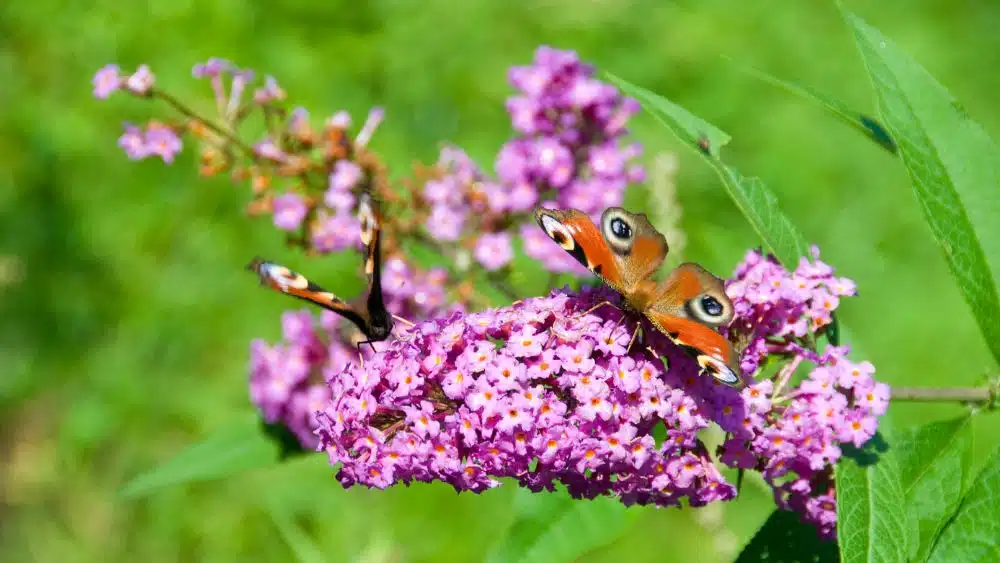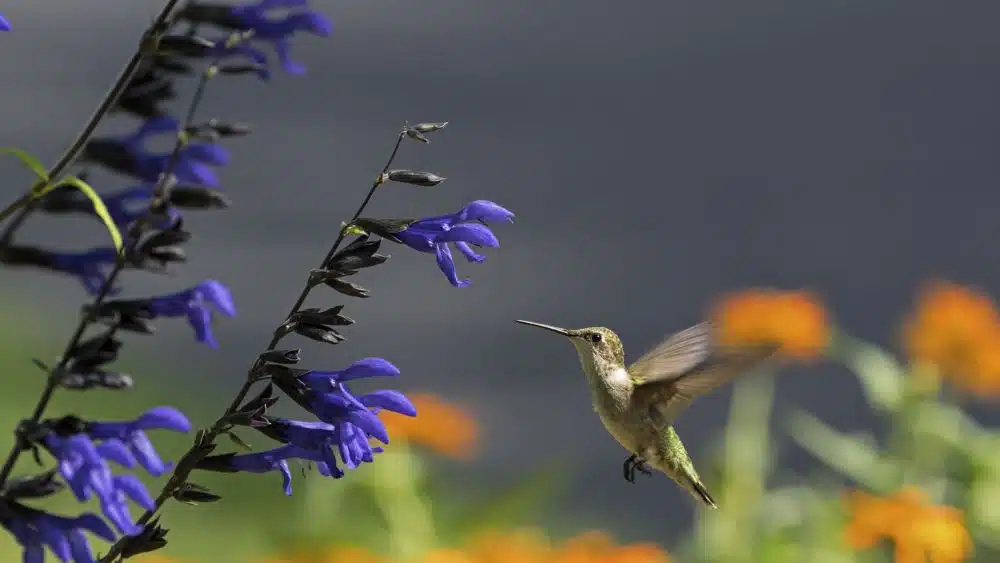As the frost begins to melt into the change of seasons, it’s time for new homeowners to begin preparing their yards and flower gardens. Before you get your shovel and start planting for the spring season, it’s best to do thorough research to understand your climate. Find out which plants and flowers will thrive in your region and learn how to best care for them. The more you know about native planting, the more successful your garden will be!
Find Your Zone
The first step to choosing the best plants for your region is to determine which Plant Hardiness Zone you live in. The USDA has developed a map of plant hardiness zones based on climate conditions and average annual minimum winter temperatures to help gardeners determine which plants thrive in the local conditions. The map contains 11 zones, of which eight are found in the lower 48 states.
To find your designated zone, use the interactive map tool on USDA.gov and type in your address. From there, you can find more specific information about your zone online or by visiting your local plant nursery. Some plants will be specific to a certain zone while others might be tagged as, “Zones 5-8,” meaning they will be happy to grow in zones 5, 6, 7, or 8.
To get a feel for the different zones and the plants that will thrive in them, here is a breakdown and several plants and flowers that grow well in each region.
North and Far North

The northernmost region, excluding Alaska, offers some of the coldest temperatures. As such, plants in these regions should either be hardy perennials or able to be lifted and stored inside during the winter.
Zone 3
The smallest and northernmost zone lies in parts of Montana, North Dakota, Minnesota, and Wisconsin, as well as areas of the Northeast including a stretch of northern New York to Maine. The growing season is typically short, lasting from early June until early September. Asters, American cranberry bush, bergenia, bog rosemary, crocus, daffodils, hostas, hydrangeas, Iceland poppies, peonies, phlox, sedum, serviceberry, lady ferns, lead plant, and tulips are recommended varieties for Zone 3.
Zone 4
Including parts of Montana, South Dakota, Wisconsin, Minnesota, and a stretch of the Northeast from New York to Maine, Zone 4 is one of the coldest climates with a very short growing season from mid-May to early September. Asters, astilbe, bellflower, bleeding heart, cannas, coneflowers, crocus, violets, daffodils, delphiniums, lamb’s ear, hostas, hyacinths, Hardy geraniums, irises, daylilies, peonies, phlox, Shasta daisies, sedum, tulips, and yarrow are recommended to do well in Zone 4. As for trees and shrubs, azaleas, inkberries, elm, pine, winterberry, hemlock, cherry, and poplar are hardy enough to survive the chilly winters and provide some of the most gorgeous landscapes in the lower states.
Pacific Northwest, Midwest, and Northeast

Encompassing a large swoop across the country, Zones 5, 6, and 7 touch most of the Northeast, Midwest, Western, and Pacific Northwest states. They often have milder winters than the harsher northern climates, but the growing season ranges.
Zone 5
A long stretch of the Midwestern states including Colorado, Nebraska, Iowa, Illinois, Missouri, Indiana, and Michigan, then traveling up through the Northeast from Pennsylvania to southern Maine makes up the majority of Zone 5. While the last frost is typically in late April, the growing season is often from early June until early September. Many plants can thrive in this region due to a milder climate than in chilly northern states, so make sure to check with your local nursery for their professional pick of native plants. Asters, filipendula, astilbe, butterfly weed, bee balm, hellebore, coneflowers, bleeding heart, crocus, daffodils, ferns, delphiniums, hostas, fox glove, coral bells, hyacinths, irises, hollyhock, lilies, peonies, lavender, phlox, salvia, Russian sage, sedum, tulips, yarrow are recommended for Zone 5, but there are too many varieties and options available to be able to list them all.
Zone 6
As one of the larger growing areas, Zone 6 includes the Pacific Northwest states of Washington, Idaho, Oregon, and Nevada before pushing through to the West and Midwest including Utah, Colorado, New Mexico, Kansas, Missouri, Illinois, and Ohio, then stretching even further towards the coast by way of Kentucky, West Virginia, Pennsylvania, New York, and Massachusetts. Its growing season is typically May through late October but will likely vary based on location, given that it is such a huge area. There are many plants for this area that could tolerate the cold, but a few recommendations might include roses, peonies, azaleas, dahlias, lilies, begonias, gladiolus, hellebores, hostas, hydrangeas, astilbe, caladium, cannas, bleeding hearts, forsythia, toad lilies, ferns, irises, butterfly bush, daylilies, tulips, daffodils, hyacinths, hibiscus, coneflowers, asters, alliums, and crocus.
Zone 7
Very similar to its neighboring zone to the north, Zone 7 includes much of the Pacific Northwest such as Washington, Idaho, Oregon, and Nevada, then flows into the West and Midwest through Utah, Arizona, New Mexico, the Texas Panhandle, Oklahoma, Arkansas, Tennessee, North Carolina, Virginia, Maryland, then going into Pennsylvania, West Virginia, New Jersey, New York, Connecticut, Rhode Island, and Massachusetts. It also includes a northern stretch through Mississippi, Alabama, Georgia, and South Carolina. The growing season is fairly long from mid-April through late October but may fluctuate by location. There are quite a few plants that can tolerate this region, but the top-recommended may include nice conifer trees such as junipers, spruces, firs, and pines; camellia and rhododendron; crossvine and winter jasmine. Black-eyed susan, asters, astilbe, mealy-cup sage, bee balm, cannas, coneflowers, English lavender, crown Imperial, daffodils, delphiniums, glads, butterfly weed, hollyhock, hibiscus, hostas, hyacinths, lilyturf, irises, jasmine, candytuft, lilies, peonies, yellow alyssum, phlox, salvia, sedum, clematis, succulents, geraniums, hydrangeas, tulips, and yarrow.
West Coast and the South

The last three zones found in the lower U.S. include Zones 8, 9, and 10. These are primarily found in the far West coast region, along the Gulf Coast, and in the Southern U.S. These are often temperate or more warm climates. They are warm enough to allow most plants to thrive while offering longer growing seasons. Especially in humid and moisture-rich climates, there are many tropical plants of brilliant colors and varieties that will thrive in the environment.
Zone 8
A warmer climate than most, Zone 8 is located mostly in the western and coastal regions of Washington and Oregon, as well as parts of Nevada, Arizona, and New Mexico, then moving into Texas, Arkansas, Louisiana, Mississippi, Alabama, Georgia, the Carolinas, and Virginia. The northern part of Florida is also designated as Zone 8. The growing season is typically from early April to late October. Recommended plants include lantana, Mexican petunia, oleander, bee balm, cannas, asters, lilac, astilbe, coneflowers, ajuga, creeping juniper, English ivy, crocus, daffodils, hydrangeas, dahlias, glads, heat-tolerant hostas, hibiscus, hyacinths, jasmine, lilies, irises, peonies, sedum, succulents, phlox, salvia, tulips, and yarrow. Trees likely to thrive in the region may include cypress, crape myrtle, dogwood, fig, queen palm, green ash, juniper, oak, and magnolia.
Zone 9
Located in the Pacific coastal region and the South, Zone 9 includes a significant part of California, the southern region of Nevada, Arizona, South Texas, Louisiana, Florida, and most of the Gulf Coast. The region has a long growing season from late February until late November, so choosing drought-tolerant and full-sun-inclined perennials for this region is practical. Much of the Gulf Coast is also quite humid, making it a great spot for tropical plants to thrive. Recommended plants and flowers may include astilbe, blanket flowers, bee balm, bulbine, butterfly weed, cannas, coneflowers, daylilies, crocus, croton, globe thistle, daffodils, dahlias, marigolds, glads, mealycup sage, hibiscus, hostas, hyacinths, nasturtium, irises, pavonia, jasmine, phlox, Shasta daisy, salvia, sedum, tiger flowers, trumpet vines, and snake plants.
Zone 10
The smallest zone in the lower U.S. is Zone 10, which naturally occurs along small parts of the southern coast of California and nearby Arizona, along the southern tip of the Gulf Coast in Texas, the southern part of Florida, and Hawaii. Zone 10 is home to the longest growing season and as such, most local plants can tolerate a growing season of late January until early December. Bougainvillea, azaleas, beautyberry, cannas, croton, California poppy, allamanda vines, coral honeysuckle, dahlias, beach sunflower, geraniums, glads, muhly grass, passionflower, jasmine, lemonade berry, hibiscus, hummingbird sage, tango hummingbird mint, sedum, shaw’s agave, snake plants, frangipani, royal poinciana, Hong Kong orchids, peperomia, palm trees, bird of paradise, and succulents are all recommended for Zone 10.
Know Your Garden and Find Your Best Fit
Home gardeners should take the time to get to know their space before planting new flowers. Determine if you have any microclimates, otherwise known as areas in which the climate may be cooler or warmer due to excess shade or sunlight. Some areas may be more prone to water or freezing. Learning more about the soil and access to sunlight and water will help you choose plants that can thrive in your garden. Consult a local expert at your area plant nursery for tips and guidance in choosing your new flower garden plants. With a little research and a bit of preparation, your new garden will be planted and blooming in no time.

Melanie Theriault is a writer, counselor, and lifelong learner. She holds a B.A. in Sociology from Southwestern University, where she discovered her passion for fostering human connection through storytelling.
 8 Ideas to Inspire your Dream Closet
8 Ideas to Inspire your Dream Closet